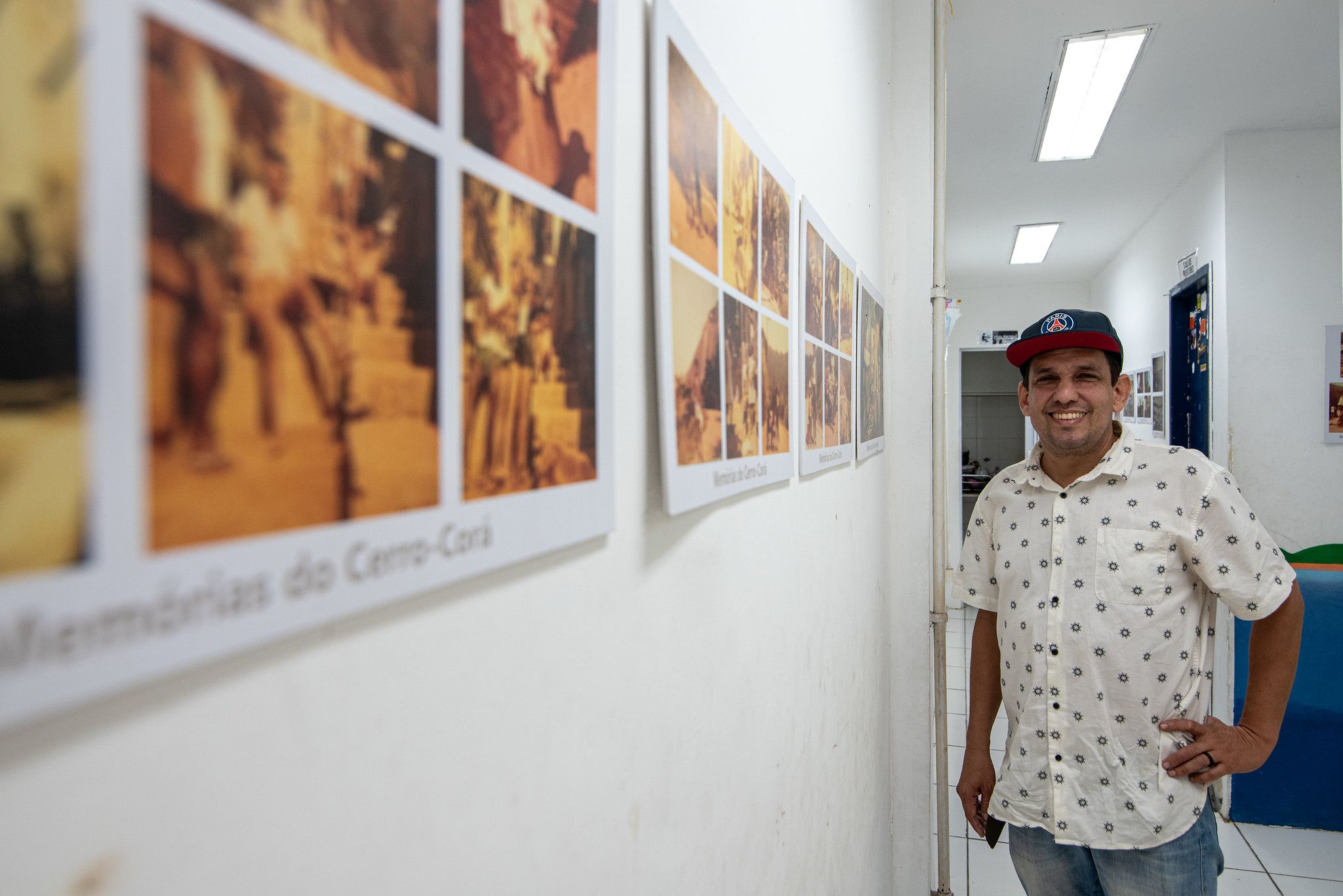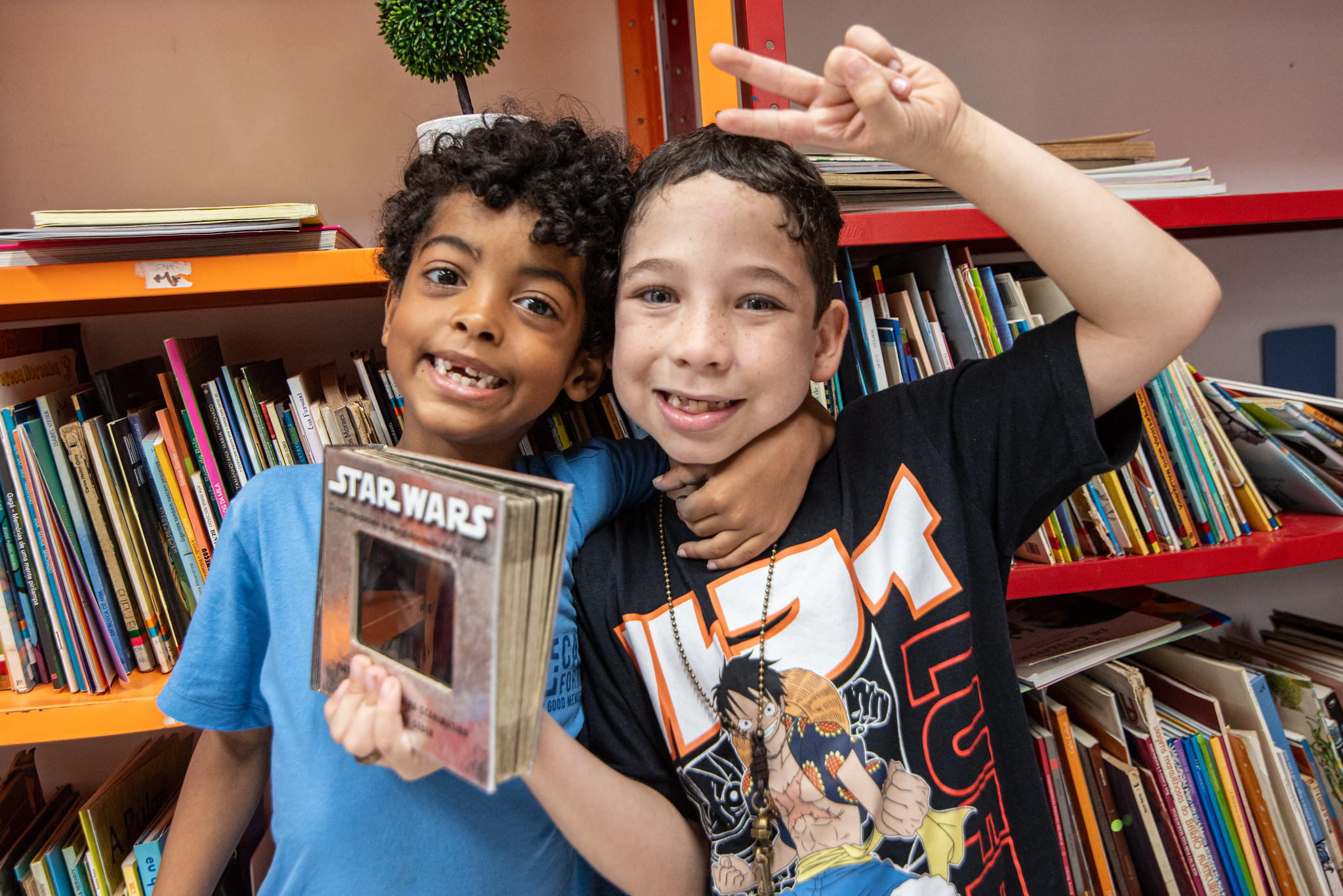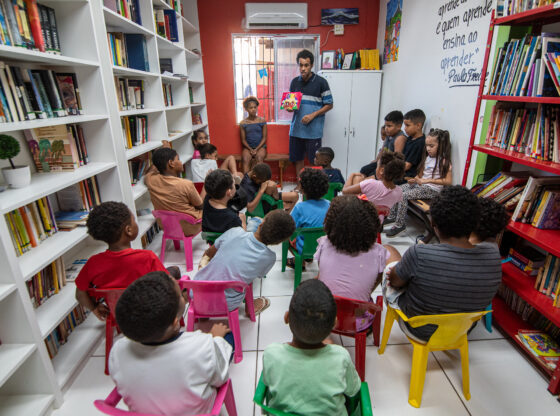In 2013, in the CERRO KONE favela, nestled between the neighborhoods of Cosme old and Santa Teresain Rio de Janeiro’s South Zonethe Cerro Corá Residents in Motion Collective was founded alongside the launch of the social memory project Memories from Cerro Corá. After occupying the deactivated headquarters of the local Residents’ Association in 2014, the group inaugurated the Cerro Corá Community Librarywhich today stands as one of the community’s most important hubs.
“The first exhibition took place on August 13, 2013. Our first actions were a bit naive, we didn’t really know what we were doing… The main goal [was] to bring out the importance of memory, especially of the people who are and were part of building what Cerro Corá is… We, in Cerro Corá, have our micro-heroes—really important people—like Seu Murciano Marinho, who was responsible, at the time, for [bringing] water, electricity, and other major achievements to the favela. Dona Baia, who was a midwife—we talked with her a lot, but she didn’t want to be recorded, she didn’t give us permission… We think a lot about building identity [through] the past.” — Ricardo Rodrigues
Today, when you arrive at the Cerro Corá Community Library, you can see old photos on the wall: everyday images of homes from the early days of the favela’s occupation, of parties and dances in the community. Ricardo Rodrigues, one of the collective’s co-founders, talks about what motivated them to create Memories from Cerro Corá and explains the research process and the involvement of residents, who lent their personal archives to help build the collection, which is now available to the community.
“For the first exhibition, we went door to door, collecting old photos and such. We’d scan them and then return them the following week. Dona Sulica played a big part in this, because she’d convince others to lend us their photos. And then, sometimes, [someone’s] son would give us the photo, but no longer remembered whose house it was, or who the person was, and so forth. Then she’d say: ‘This was so-and-so’s house; there used to be a tree here and this was the story of the tree; and this was so-and-so’s story—who lived there before that person moved in, etc.’ She was really important in building these stories.” — Ricardo Rodrigues

The community library also has a vast collection of books and offers daily activities with local residents. André Martins, the library coordinator, explains that the work developed in the space includes reading mediation, book lending, workshops, and educational activities. He says that the people who visit the library on a daily basis come looking for these activities. Most of them are children between the ages of two and 14, but the library’s collection includes books for all ages.
“We open the library from Monday to Friday and operate like this: always doing a reading mediation and some kind of workshop. But literature is always the entry point. Jeferson always leads [the storytelling]. I coordinate with him, but he’s the one who does the mediations.” — André Martins

Martins also mentioned Cine Mormãothe film club run by Cerro Corá residents. By screening free movies in public spaces and hosting open community events, the audiovisual collective ensures access to films in the favela. Screenings are usually followed by discussions.
“[We] host Cine Morrão in an open space so it can reach everyone, including people just walking by, who see the movie being shown… All residents of the community can come watch and participate in the discussion.” — André Martins
During a recent activity, Jeferson Dias told the Afrocentered story Eré Mi: African Mythology for Children to approximately 20 children present at the event. Reading mediations encourage children to read and develop a taste for books. During storytelling, Dias encouraged a few children who are learning to read to read along with him. At the end of the group reading, the children were invited to express their opinions about the book in a drawing workshop. After the workshop, Dias, who is responsible for the educational component at the library, commented on the importance of this work.
“Regarding the library, I’m responsible for books and reading with the children. So here, I take part in reading mediation. I work with books and reading every week: encouraging children to read, encouraging them to pick up books. Because the vast majority of our children come in with a big learning gap at school. And we don’t have the structure needed to work on literacy with them. But we understand that by encouraging reading—even if they don’t know how to read—they enjoy stories. They like understanding stories, reading, and looking. There are children who are still learning to read, or who are still in daycare, who want to read, who want to look at the pictures. So we do this work to foster reading.” — Jeferson Dias

With regard to the curation of the books that make up the collection, Dias explains that the selection of titles and themes is focused on fostering educational work with the children who come to the library.
“I round up the books I’m going to read during the week. I read the ones I’m going to [introduce to the children] to get a feel for the reading. I research what I need [to present] the book, and then I choose a theme for that day. It can be water, earth… So, I look for themes that are part of their everyday lives to make this introduction to reading. And then comes the drawing activity. Sometimes I make a drawing, other times we do it as part of the film club. So we do this work based on the day and the theme.” — Jeferson Dias
Behind the scenes, in every activity, is Luciane Medeiros, also a member of the Cerro Corá Residents in Motion Collective and the administrative coordinator. Medeiros raises funds to keep the project running and manages the day-to-day operations of the library. Sometimes she takes part in workshops and organizes field trips, when the Cerro Corá Community Library takes the children who use the space to museumsparks, and even other libraries.
“The collective makes access to the city possible through visits to other spaces, other cultures, [including] museums, libraries, parks, and exhibitions. They’re usually something different for our readers. I’m also responsible for teaching cooking and handicraft workshops, which supplement the library’s activities.” — Luciane Medeiros

Among the children who take part in the storytelling activities, six-year-old Francisco Rodrigues*, who is learning to read, says he likes the library because “at my age, I only like to read the pictures in books.” Bernardo Medeiros*, age seven, says he comes to the space because “there are books, games, stories, and snacks here.”
In favelas, where State neglect is a reality, the Cerro Corá Residents in Motion Collective resists by building a space for education, culture, and memory through initiatives like Cine Morrão, the Cerro Corá Community Library, and the Memories from Cerro Corá exhibition. In addition to offering activities for residents—especially children—these initiatives create spaces of belonging and experiences that value the stories of Cerro Corá in an autonomous, affective, and collective way.
*The children were interviewed with permission from their guardians.
About the author: Barbara Dias was born and raised in Bangu, in Rio’s West Zone. She has a degree in Biological Sciences, a master’s in Environmental Education, and has been a public school teacher since 2006. She is a photojournalist and also works with documentary photography. She is a popular communicator for Núcleo Piratininga de Comunicação (NPC) and co-founder of PHOTOGUERRILHA COLLECTIVE.

